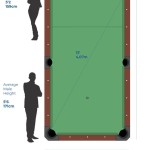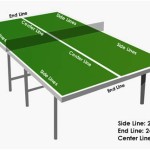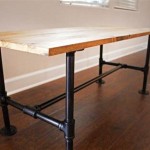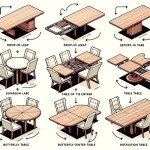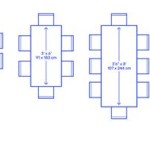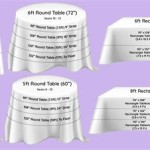Snooker Table Size Chart: A Comprehensive Guide
Snooker, a cue sport played on a large table with pockets, demands precision and strategic thinking. The dimensions of the snooker table are crucial to the integrity of the game, influencing gameplay, skill development, and overall player experience. This article provides a detailed examination of snooker table sizes, outlining standard dimensions and variations, alongside relevant considerations for selection and maintenance.
Standard Snooker Table Dimensions: The Full-Size Table
The full-size snooker table, often referred to as a tournament-size table, is the standard used in professional competitions and is the most common size found in dedicated snooker halls. Understanding the precise dimensions of this table is essential for both players and those considering purchasing or maintaining one.
The playing area of a full-size snooker table measures 11 feet 8 1/2 inches by 5 feet 10 inches (356.9 cm by 177.8 cm). These dimensions are measured from cushion to cushion. The overall external dimensions of the table, including the frame, are larger, typically around 12 feet by 6 feet (366 cm by 183 cm). This extra space is needed to accommodate the cushions, pockets, and the frame itself.
The height of the table, measured from the floor to the top of the cushions, should be between 33 1/2 inches and 34 1/2 inches (85.1 cm and 87.6 cm). This height allows players to comfortably rest their cue and maintain consistent posture during gameplay.
The pockets on a full-size snooker table are meticulously designed and placed for optimal gameplay. There are six pockets: one at each corner (corner pockets) and one in the middle of each long side (middle pockets). The cut of the pocket, its width and angle, is carefully regulated to provide a challenging yet fair playing environment.
The slate bed of a snooker table is a critical component affecting playability. Full-size tables typically use five pieces of slate, each around 1 1/2 to 2 inches (3.8 cm to 5 cm) thick. The combined weight of the slate can exceed one ton (1000 kg), providing a stable and level playing surface. The slate is meticulously leveled and joined to create a smooth, seamless surface for the cloth.
The cloth covering the slate is traditionally made of wool and must be tightly stretched to provide a fast and consistent playing surface. The quality of the cloth significantly affects the speed and accuracy of the balls.
Smaller Snooker Tables: Variations and Considerations
While the full-size table is the standard for professional play, smaller snooker tables are available to accommodate smaller spaces or for recreational use. These tables offer a scaled-down version of the game and can be suitable for homes, schools, or smaller recreational facilities. It is important to acknowledge that playing on a smaller table can alter gameplay dynamics and may not fully translate to skills required on a full-size table.
Common smaller sizes include 10-foot, 9-foot, 8-foot, and 6-foot tables. The dimensions are proportionally reduced while maintaining the basic ratios of the full-size table. For example, a 10-foot table will have a playing surface approximately 10 feet long and 5 feet wide. An 8-foot table's playing surface will be about 8 feet long and 4 feet wide.
When choosing a smaller snooker table, the available space is the primary consideration. It is essential to have sufficient room around the table to allow players to comfortably maneuver and take shots. A general rule of thumb is to allow at least 4 to 5 feet of clearance around all sides of the table. This ensures that players can use a standard-length cue without obstruction.
The quality of materials and construction remains critical for smaller tables. While the slate may be thinner or come in fewer pieces, it should still be of sufficient thickness to provide a stable and level playing surface. The cloth, cushions, and frame should also be of reasonable quality to ensure a satisfactory playing experience.
Pocket sizes on smaller tables may vary proportionally to the table size. Typically, as the table size decreases, the pocket size also decreases. This maintains a relative level of difficulty in potting balls. However, the precision required can be less demanding compared to a full-size table.
Playing on smaller tables can be beneficial for beginners or those learning the fundamentals of snooker. The reduced distances and smaller playing area can make it easier to develop aiming skills and master basic techniques. However, for players aspiring to compete at a higher level, spending significant time on a full-size table is essential.
Factors Influencing Table Selection and Maintenance
Selecting the appropriate snooker table size and maintaining it properly are crucial for ensuring optimal gameplay and longevity. Several factors should be considered during the selection process, and ongoing maintenance is necessary to preserve the table's condition.
Available Space and Room Dimensions
As previously emphasized, the available space is paramount. Accurate room measurements are essential before purchasing a snooker table. Consider not only the table's dimensions but also the necessary clearance around the table for comfortable gameplay. Obstructions such as walls, furniture, or columns can significantly impede play.
Budget and Material Quality
Snooker table prices can vary considerably depending on size, materials, and brand. Higher-quality materials, such as thicker slate, premium cloth, and durable frames, will generally result in a more expensive table. However, investing in a higher-quality table can provide a better playing experience and increase its lifespan.
When budgeting, consider not only the initial purchase price but also the ongoing costs of maintenance, such as cloth replacement and potentially cushion replacement. It is advisable to research different brands and compare prices to find a table that offers a good balance between quality and affordability.
Environmental Factors and Maintenance
The environment in which the snooker table is placed can significantly affect its condition. Excessive humidity, temperature fluctuations, and direct sunlight can damage the cloth, slate, and frame. Ideally, the table should be placed in a climate-controlled room with stable temperature and humidity levels.
Regular maintenance is essential for preserving the table's condition. This includes brushing the cloth regularly to remove dust and chalk particles, using a vacuum cleaner with a brush attachment to clean the pockets, and occasionally ironing the cloth to maintain its smoothness and speed. Spills should be cleaned immediately to prevent staining or damage to the cloth.
The cushions, which provide the rebound for the balls, may need to be replaced over time as they lose their resilience. The frequency of replacement depends on the quality of the cushions and the amount of use the table receives. Signs of worn cushions include inconsistent ball rebound and a dull sound when the ball strikes them.
The slate bed should be checked periodically for levelness. Unevenness can affect the accuracy of shots. If the table is not level, shims can be used to adjust the height of the legs. If the slate has shifted or become significantly uneven, professional realignment may be necessary.
By carefully considering these factors and implementing a regular maintenance routine, snooker players can ensure that their table provides a consistent and enjoyable playing experience for years to come.

What Size Room Will I Need For My Snooker Table Liberty

American Billiards Service Pool Table Size Chart

How To Choose The Right Snooker Table Buyer S Guide

What Size Table Is Right For My Room

Pool Table Size Chart Moving The Experts

Pool Table Sizing

Snooker Table Layout Dynamic Billiard Mississauga

Pool Table Size Chart Ideal Dimensions For Billiard Tables

Space Required For Billiard Table

Supreme Pool Table Room Size Information

